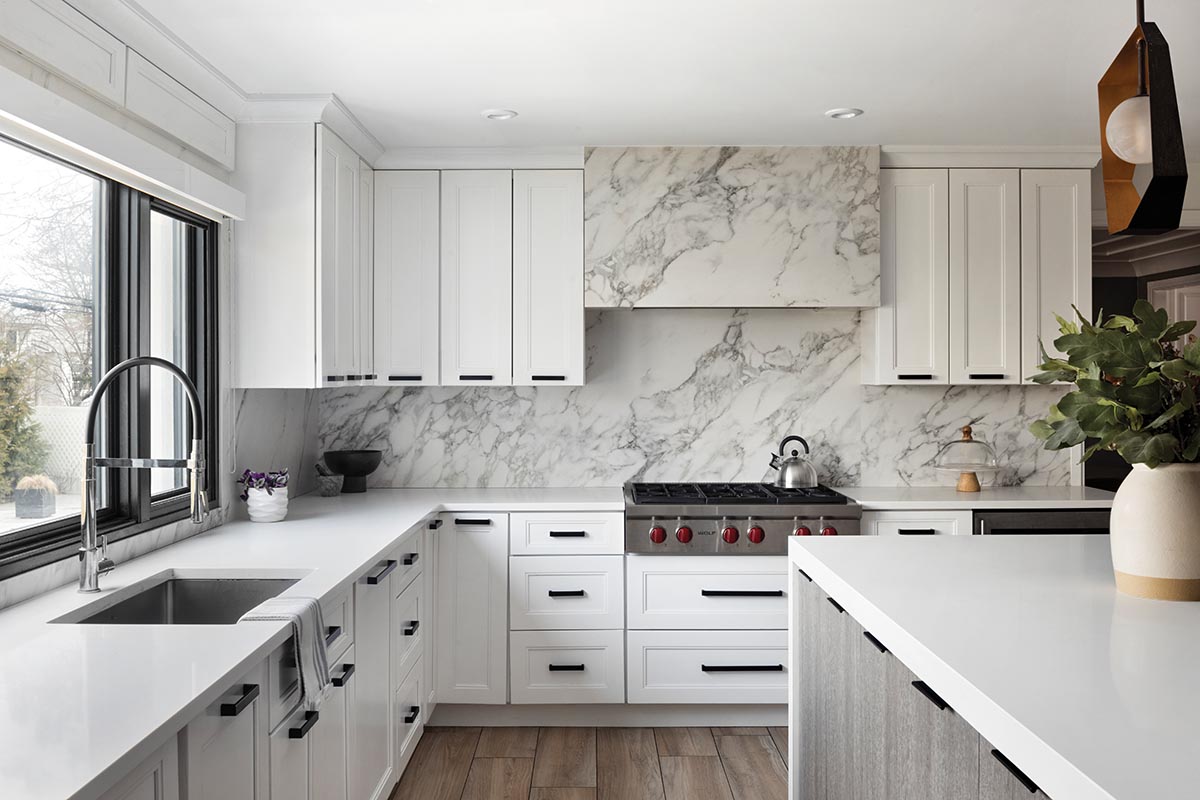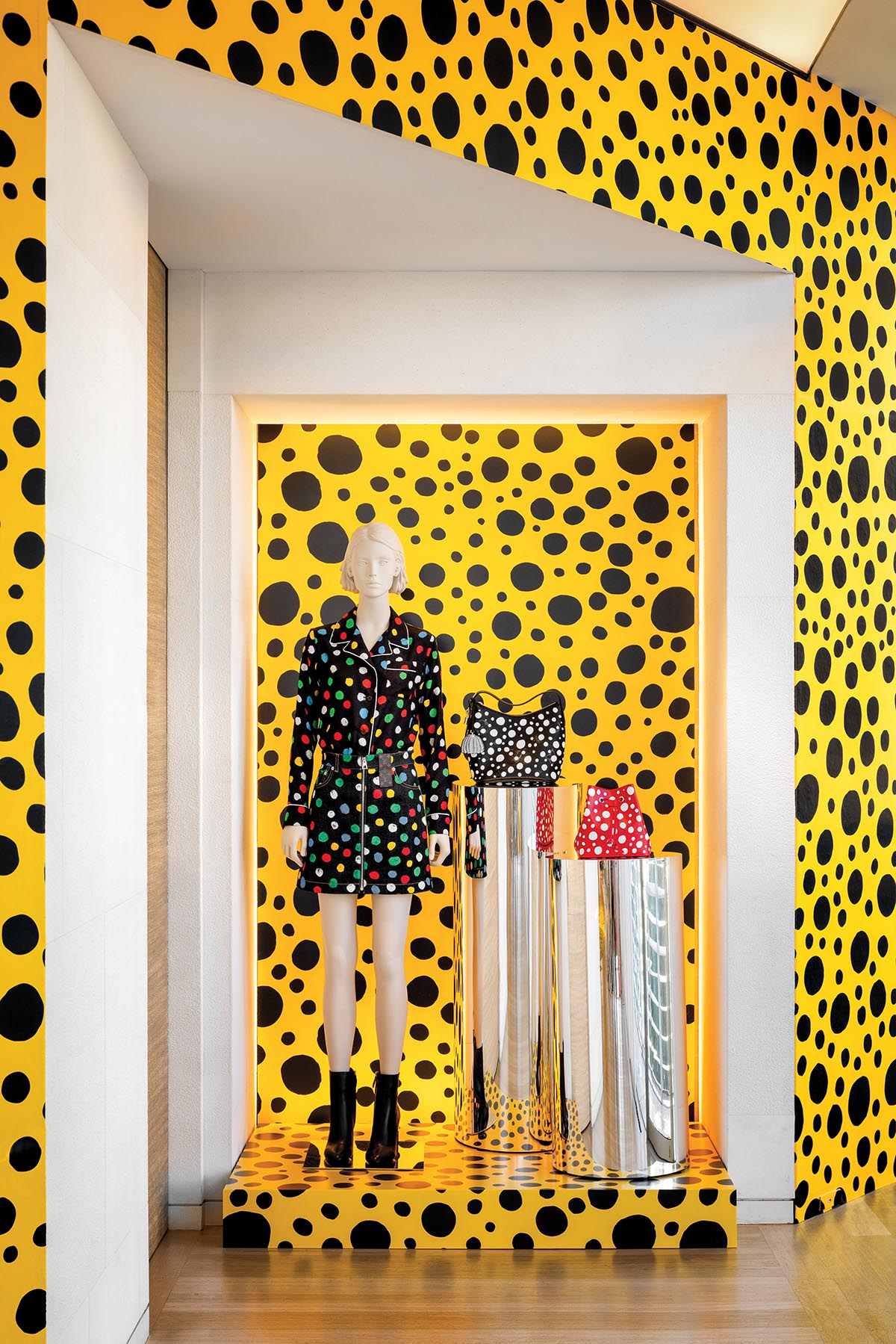Growing up with a wedding photographer father, Brian Berkowitz thought that professional photographers did weddings and portraits, maybe had a couple of small sidelines, and that was it. But as an adult, a series of events led the Long Island photographer—who initially followed in his dad’s footsteps—to discover architectural and interior photography. His eyes opened to a fascinating field with new creative avenues he previously didn’t know existed. Today, Berkowitz is considered one of the preeminent architectural photographers in the New York area, with a specialty in retail store photography and commercial work with brands such as Gucci, Rolex, Louis Vuitton, and others.

DOOR TO REAL ESTATE
Working as a wedding photographer in 2012, Berkowitz was creating some HDR exposure fusion portraiture for highly saturated bridal portraits with a unique look. An owner of a studio he’d been contracting with asked if he’d be interested in applying the technique to real estate photography for a friend who was an interior designer. “That was it for me,” recalls Berkowitz. “I fell in love with shooting the built environment and found a passion for architecture and design that I didn’t know I had.”
From there, Berkowitz started researching architectural photography and associated career options. That research led him to real estate photography—doing shoots for real estate agents to help promote properties for sale—which he soon realized was a good way to get a foot in the door for architecture and interior photography. “Real estate photography has a lower barrier to entry,” he says. “And most professional photographers can do a real estate shoot with the equipment they already have.”

Berkowitz identified a couple of business approaches to real estate photography that could work. The first is the volume option, which involves doing five to 10 shoots a day in rapid-fire succession. The second is more of a boutique option, maybe one property a day, working on higher-end listings and producing a more refined product.
Berkowitz leaned toward the boutique model and gradually built up a client list of some of the top real estate agents on Long Island. He was able to land contracts with successful agents because he understood an underlying truth about real estate photography: Although the job is to help sell houses with striking imagery, an important secondary purpose is to help agents get more listings. “We’re providing marketing content for agents to go out and get their next listing,” he explains. “The agents use the photographs to pitch new potential listings. It allows them to show sellers that they have a dedicated photographer producing high-quality work to help sell their home; they’re not just walking around snapping pictures with their phone.”

INTO ARCHITECTURE
Real estate photography provides a natural steppingstone into architectural and interior design photography. Architects and interior designers need photographs of their projects, but not all projects have the budget for a full-fledged commercial shoot. But skilled real estate photographers can provide a quality, budget-friendly option and, in turn, set themselves up for additional work on the commercial side of architectural and interior photography.
To step into architectural work, Berkowitz says most photographers can get started with the gear they already possess. Essentials include a camera body, a wide zoom lens (15-35mm is a good option), and a tripod. Berkowitz recommends bracketing exposures to provide the ideal exposure combination and learning to edit images using different brackets.
It’s also critical to learn the basic rules of architectural photography, which are founded in representing the space so it appears true to reality. Straight lines are particularly important. Vertical lines should be vertical, horizontals horizontal, not converging in a manner that a viewer wouldn’t see if they were looking at the scene in real life. “It’s obvious when a shoot hasn’t been done professionally because there are converging lines, crooked doorways, or horizontal lines that aren’t level,” says Berkowitz. “In those cases, it’s clear that someone shot the image with a phone or did it quickly and didn’t know what they were doing.”

Architectural clients want photographs that show the room as it appears when someone walks in or a building as it appears when seen from outside. Photographers can help ensure this true-to-life perspective by mounting their camera on a geared head to verify a perfectly level shooting surface.
For interior shots, Berkowitz likes to bring in at least a little detail from outside the windows, assuming the scene out there is appealing. If there’s an ugly wall covered in graffiti, he’ll blow out the windows a little more in the exposure to hide the outdoor scene, but even in those cases it’s important not to overexpose so that windows appear as an amorphous white blob of light.
Berkowitz photographs most interiors with natural and available light, typically using off-camera flash only to address a problem that natural lighting won’t solve. For instance, if the sun is shining into a room and producing a halo around the window but the architect wants to feature the millwork around the window, he’ll use a flash and bring down the exposure to compensate for the added light to avoid the halo effect and clearly show the window detail. Or on cloudy, gloomy days he might place flashes outside the windows to mimic sunlight shining in.
“These are techniques that go beyond architectural photography as well,” says Berkowitz. “For wedding and portrait photographers, they can elevate the work.” Let’s say you’re photographing a bride and groom in a great venue with interesting architectural features. “You want to make sure you’re including those but also shooting them in a way that is accurate, with good lighting, and without converging lines. If you’re more aware of those kinds of details while shooting, it brings your portrait and wedding work up a notch, and it can help you appeal to another level of client.”


RETAIL NICHE
As his work in architectural and interior design photography expanded, Berkowitz carved out a niche with retail establishments. It began with a series of shoots for what was Google Business View, which led to a contract with a luxury mall on Long Island and, eventually, to photographing stores for luxury brands.
Retail store photography represents an interesting and somewhat untapped subset of architectural photography, combining elements of interior photography, marketing, and commercial product photography. Clients use the images for media related to store openings, to showcase store decor for holidays or special events, and for website store locators and online listings. It’s a fast-paced field, with images being used to announce openings or for time-sensitive publicity. Often, Berkowitz photographs a store early in the morning before its launch “because a store will never look as good as it does the morning it opens,” and delivers the images later that day.

MAKING IT HAPPEN
When photographers ask him about getting into architectural photography, Berkowitz recommends starting, like he did, with real estate photography. “Most people that have a camera, a decent zoom lens, and a tripod can probably go out and start shooting some basic real estate photography right away,” he says. There is a lot of technique that needs to be learned, but opportunities abound with real estate agents who are eager to work with photographers for professional images, especially if you offer to do an initial shoot or two for free while working on your technique.
Then practice, practice, practice. Photograph your own home if you need to. Stage some shoots and work on lighting, leveling the camera, and depicting spaces accurately. Build a portfolio of sample shoots, and then you’re ready to start approaching paying clients.

All the while, do your research. There are abundant resources available to learn and hone the skills necessary for architectural and interior photography, including YouTube tutorials, photography blogs, and podcasts. In fact, Berkowitz has hosted the Shooting Spaces podcast for the past several years and has 180 episodes dedicated to real estate photography.
“Building any business is a lot of work, but it isn’t that complicated,” says Berkowitz. “Take each step, use steppingstones like real estate photography, improve your techniques, and things will develop from there.”
Jeff Kent is editor-at-large.

